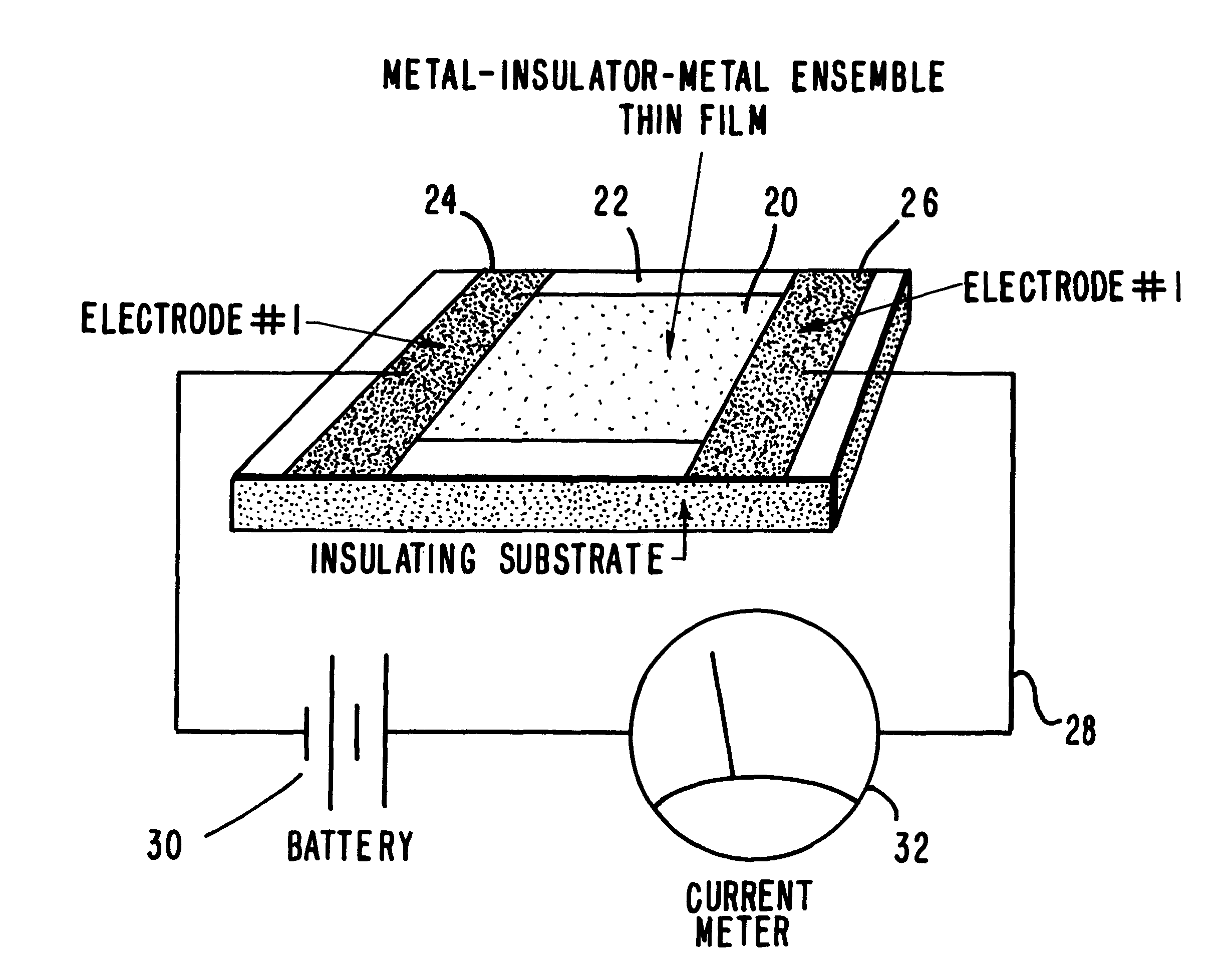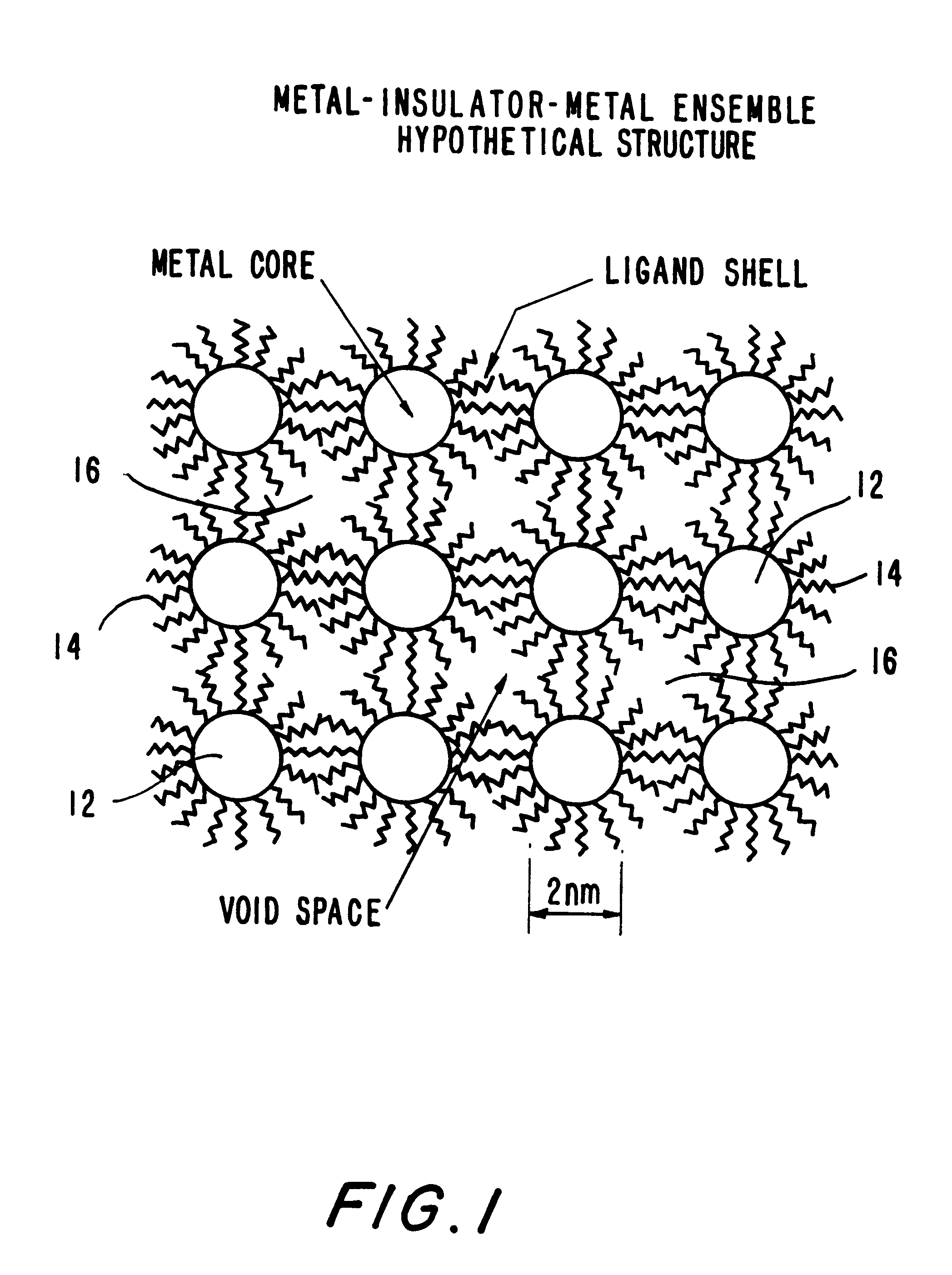Materials, method and apparatus for detection and monitoring of chemical species
a technology of chemical species and materials, applied in the direction of material analysis, material thermal analysis, instruments, etc., can solve the problems of sacrificing reliability, miniaturization affinity, and low cost, and achieve the effect of low cost and low power consumption
- Summary
- Abstract
- Description
- Claims
- Application Information
AI Technical Summary
Benefits of technology
Problems solved by technology
Method used
Image
Examples
example 1 (
Au:SC8(1:1))
Solutions of: 4.56 g tetraoctylammonium bromide ((C.sub.8 H.sub.17).sub.4 NBr) in 167 ml toluene; 0.8025 g (2.04 mmol) hydrogen tetrachloroaurate (III) trihydrate (HAuCl.sub.4.3H.sub.2 O) in 62.5 ml distilled water; 0.297 g (2.03 mmol) 1-octanethiol (C.sub.8 H.sub.17 SH) in 2 ml toluene; and 0.7870 g sodium borohydride (NaBH.sub.4) in 52.5 ml distilled water are prepared. With rapid stirring the AUCl.sub.4 / water solution is slowly added to the (C.sub.8 H.sub.17).sub.4 NBr / toluene solution. After 2 minutes the (C.sub.8 H.sub.17 SH) / toluene solution is added followed by the slow addition of the NaBH.sub.4 / water solution with very rapid stirring. The vigorous stirring is continued for 3 hr. The toluene phase is then separated and concentrated to a 10 ml volume at reduced pressure. The product is precipitated by dropwise addition into 800 ml rapidly stirred ethanol. After settling for several hours at 10.degree. C., the supernate is decanted, and product is collected by ce...
example 2 (
Au:SC8(1:3))
The Au:SC8(1:3) particle is prepared, fabricated into a sensor and tested as in Example 1 except utilizing a 1:3 mole ratio of HAuCl.sub.4 :C.sub.8 H.sub.17 SH. Characterization and sensor test results are presented in Tables 1 and 2.
example 3 (
Au:SC8(3:1))
The Au:SC8(3:1) particle is prepared, fabricated into a sensor and tested as in Example 1 except utilizing a 3:1 mole ratio of HAuCl.sub.4 :C.sub.8 H.sub.17 SH. Characterization and sensor test results are presented in Tables 1 and 2
PUM
| Property | Measurement | Unit |
|---|---|---|
| thickness | aaaaa | aaaaa |
| size | aaaaa | aaaaa |
| thickness | aaaaa | aaaaa |
Abstract
Description
Claims
Application Information
 Login to View More
Login to View More - R&D
- Intellectual Property
- Life Sciences
- Materials
- Tech Scout
- Unparalleled Data Quality
- Higher Quality Content
- 60% Fewer Hallucinations
Browse by: Latest US Patents, China's latest patents, Technical Efficacy Thesaurus, Application Domain, Technology Topic, Popular Technical Reports.
© 2025 PatSnap. All rights reserved.Legal|Privacy policy|Modern Slavery Act Transparency Statement|Sitemap|About US| Contact US: help@patsnap.com



